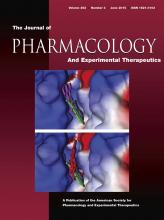Abstract
Recent findings indicate that a major mechanism by which poly(ADP-ribose) polymerase (PARP) inhibitors kill cancer cells is by trapping PARP1 and PARP2 to the sites of DNA damage. The PARP enzyme-inhibitor complex “locks” onto damaged DNA and prevents DNA repair, replication, and transcription, leading to cell death. Several clinical-stage PARP inhibitors, including veliparib, rucaparib, olaparib, niraparib, and talazoparib, have been evaluated for their PARP-trapping activity. Although they display similar capacity to inhibit PARP catalytic activity, their relative abilities to trap PARP differ by several orders of magnitude, with the ability to trap PARP closely correlating with each drug’s ability to kill cancer cells. In this article, we review the available data on molecular interactions between these clinical-stage PARP inhibitors and PARP proteins, and discuss how their biologic differences might be explained by the trapping mechanism. We also discuss how to use the PARP-trapping mechanism to guide the development of PARP inhibitors as a new class of cancer therapy, both for single-agent and combination treatments.
Footnotes
- Received December 29, 2014.
- Accepted March 9, 2015.
- Copyright © 2015 by The American Society for Pharmacology and Experimental Therapeutics
JPET articles become freely available 12 months after publication, and remain freely available for 5 years.Non-open access articles that fall outside this five year window are available only to institutional subscribers and current ASPET members, or through the article purchase feature at the bottom of the page.
|






